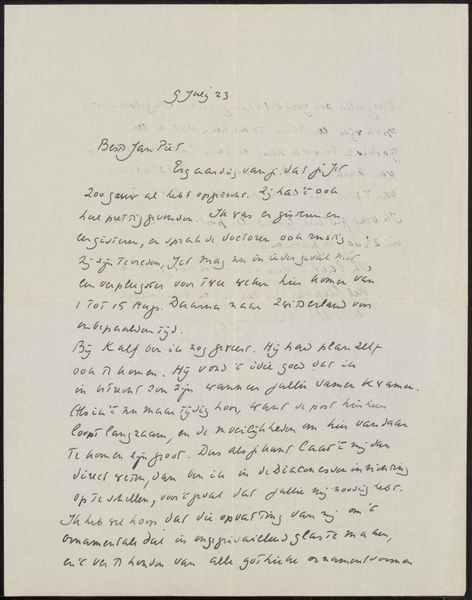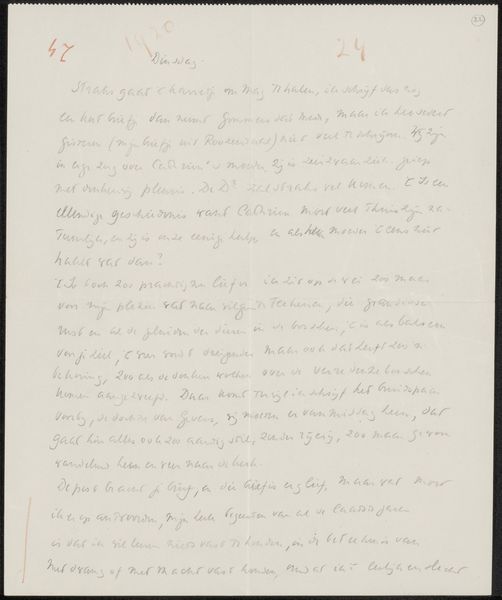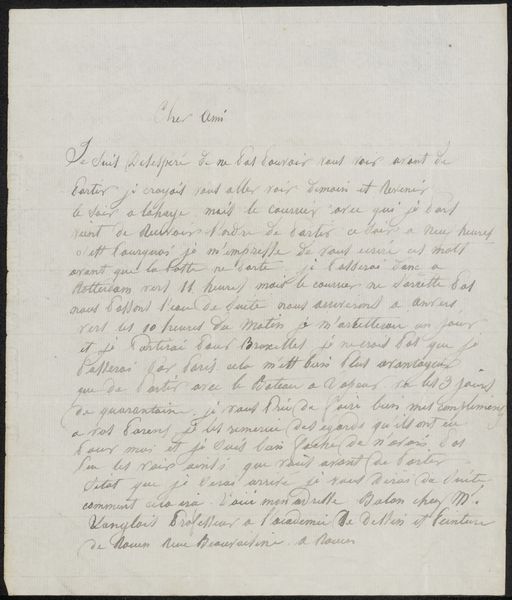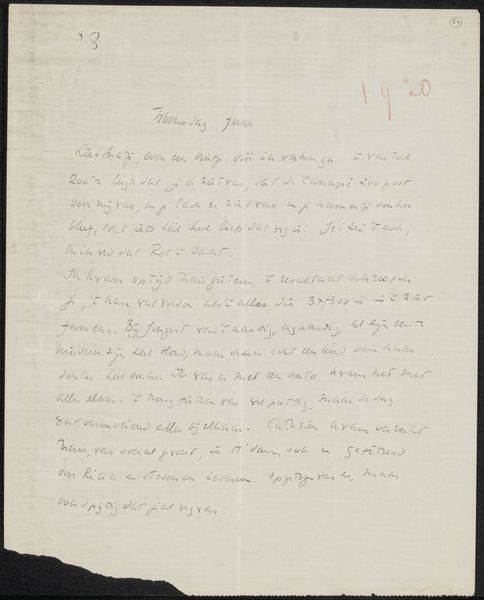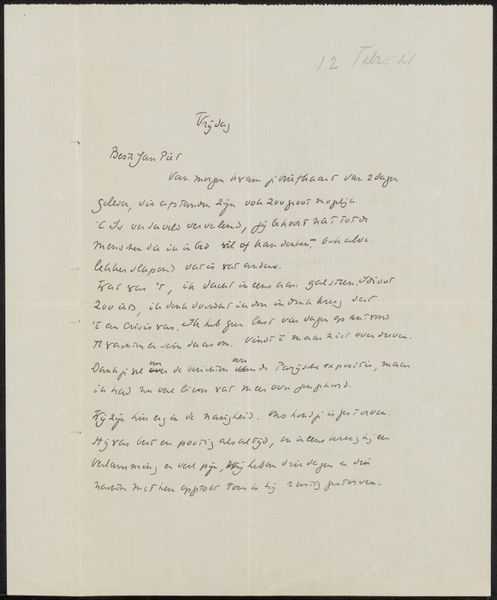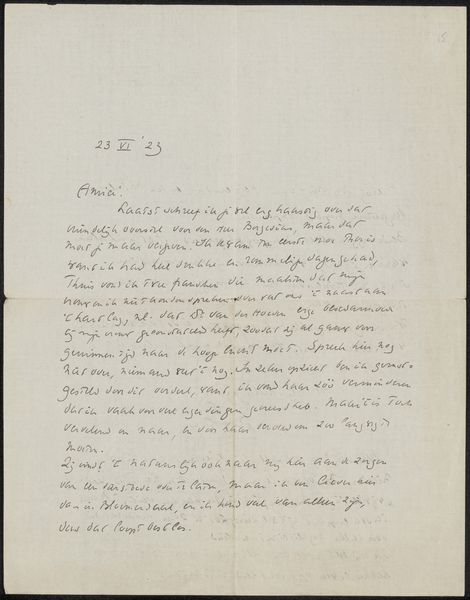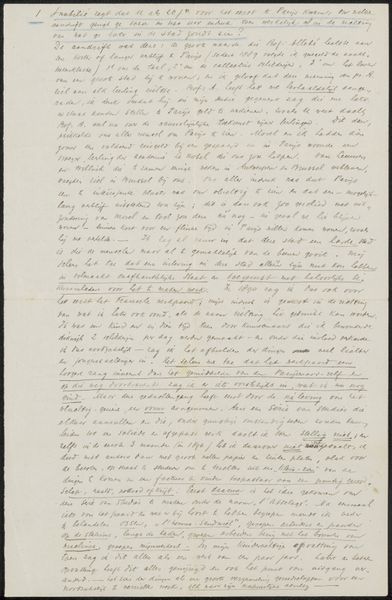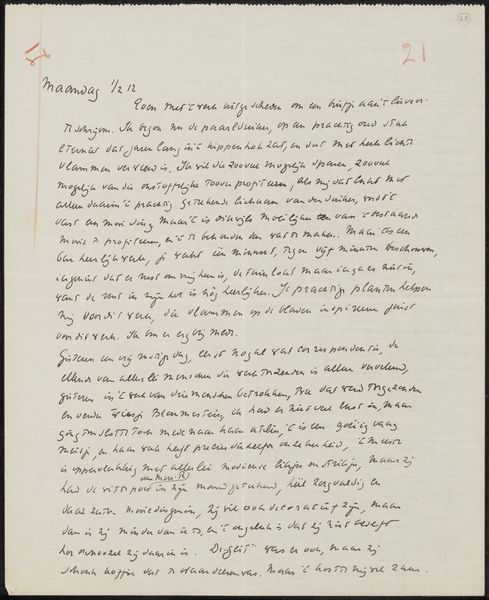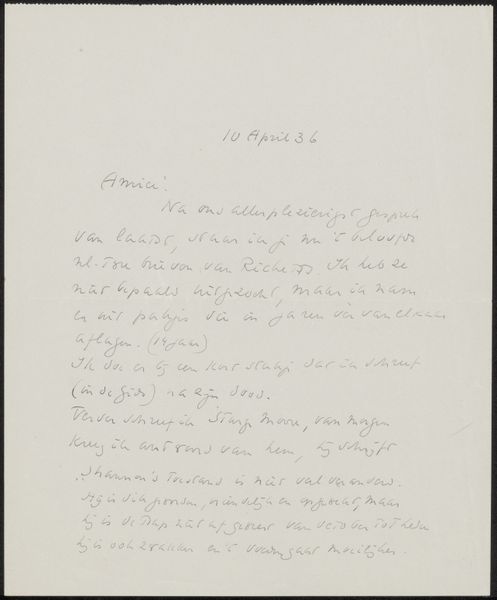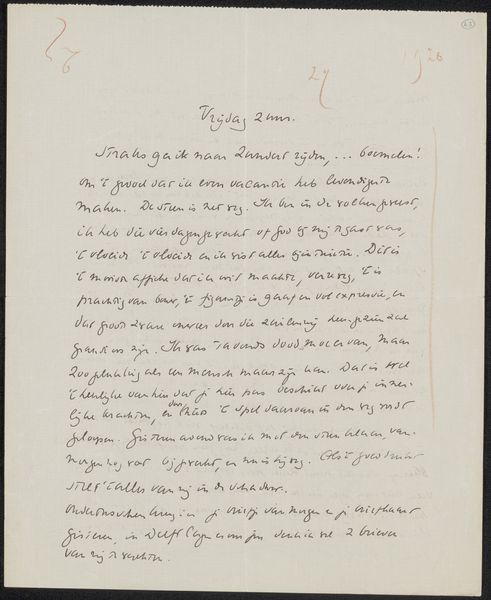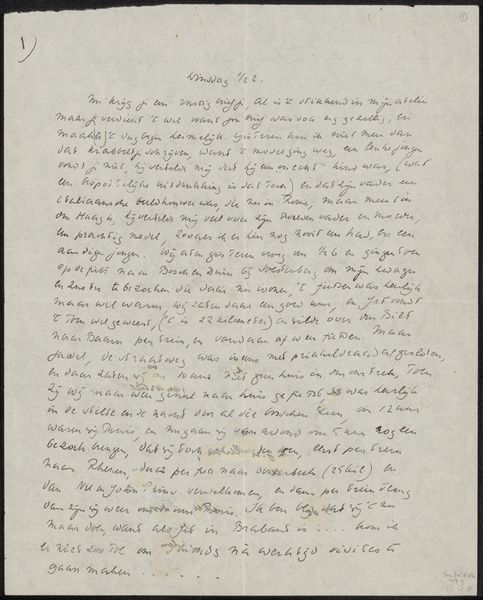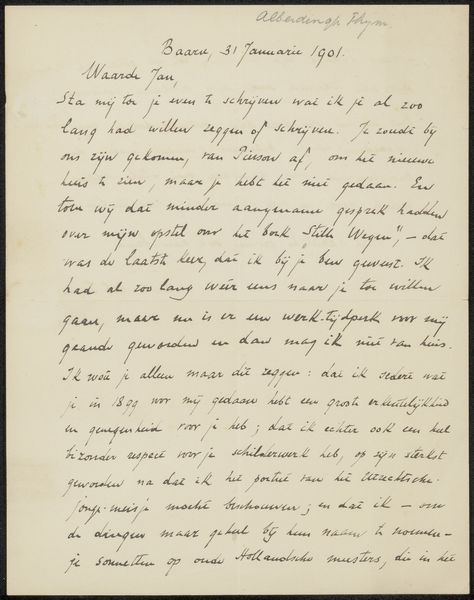
drawing, paper, photography, ink
#
drawing
#
paper
#
photography
#
ink
Copyright: Rijks Museum: Open Domain
Curator: We're looking at "Brief aan Willem Bogtman" by Richard Nicolaüs Roland Holst, possibly created between 1925 and 1927. It’s currently held at the Rijksmuseum. It consists of ink drawings and photography, combined on paper. Editor: It looks so delicate, almost like an artifact one might discover tucked away in an old book. There's something both personal and formal about the script, creating an intriguing visual texture on the paper. Curator: Absolutely. Holst was deeply involved in the social-democratic movement, and he utilized his art for didactic and political means. Letters were significant ways to maintain close connections among workers, where they could freely exchange their experiences. So, while a letter can be seen as a personal piece, the cultural history surrounding Holst elevates its public role. Editor: That certainly makes me consider the process. The hand-written quality, the permanence of ink... there’s a deliberate, almost crafted element here. Also the photographic interventions break with convention, making it something more than just a functional object for personal communication. I'm wondering about the choices and the labor. Curator: Indeed, the act of selecting a means to deliver his message becomes paramount. How could art facilitate solidarity? Holst taught at the Rijksacademie and his teaching ethos shaped younger artists' understanding of arts’ contribution to political discourse. Editor: To that point, how would you describe this relationship between utility and art here? It straddles being both, perhaps intentionally unsettling traditional hierarchies of "high art" versus functional objects, especially given Holst's political motivations? Curator: Precisely. The letter, in this instance, challenges those boundaries and becomes a unique hybrid, demonstrating how an object can be simultaneously practical, expressive, and socially charged. Editor: I concur. Examining its materials, its creation and intention in communicating socio-political ideas allows a fuller appreciation of this piece, its purpose, and message. Curator: I think understanding how social movements informed artists' approaches to their art really enriches the viewing experience. Editor: Yes, and considering artmaking as an integral part of this kind of exchange brings this letter to life beyond its textual content.
Comments
No comments
Be the first to comment and join the conversation on the ultimate creative platform.
